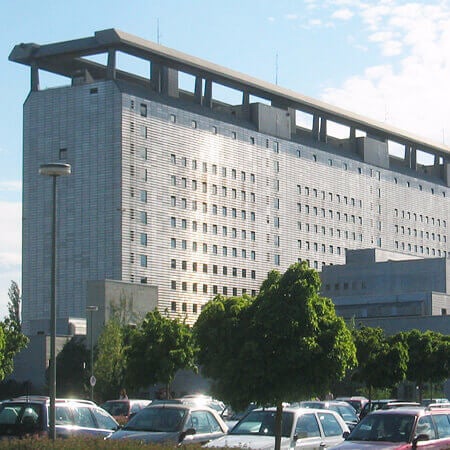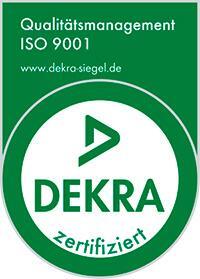Benign prostatic hyperplasia (BPH) is a sort of expected disease. At the age of 40-45 years it occurs in 30% of men, at the age of sixty – in 50%, at the age of seventy – already in 70%, and at the age of 80 BPH is found in almost 90% of men. When assessing the prevalence of prostate adenoma, it is worth bearing in mind that a visit to the doctor is often delayed, so perhaps the disease has even more impressive statistics. That is why it is so important to know more about the health condition.
BPH is a non-cancerous enlargement of the prostate gland, common in older men, causing urinary symptoms due to pressure on the urethra.
Benign prostatic hyperplasia is diagnosed through physical exams, blood tests, urinalysis, and imaging studies like ultrasound or MRI.
Treatment options for BPH include medications (e.g., alpha-blockers), minimally invasive procedures, and surgery, depending on symptom severity and patient preference.
TURP is a surgical procedure for BPH where excess prostate tissue is removed through the urethra, improving urine flow and reducing symptoms.
Yes, minimally invasive procedures for BPH include transurethral microwave therapy (TUMT), transurethral needle ablation (TUNA), and GreenLight laser therapy.
BPH is not a direct risk factor for prostate cancer. While both conditions can coexist, benign prostatic hyperplasia does not increase cancer risk.
Overview
Benign prostatic hyperplasia (BPH) is associated with adenomatous overgrowth of paraurethral glands, which more often develops in its central part with the transition to the lateral lobes. This leads to the displacement of the own tissue of the prostate gland to the outside and as if a capsule is formed on the growing adenoma. Enlarged prostate gland tissue grows both in the direction of the bladder and rectum, at the same time the internal opening of the bladder is displaced upward and the posterior part of the urethra is lengthened, which causes impaired urination up to the total retention.
Risk factors for benign prostatic hyperplasia (BPH) include age and elevated androgen levels in the blood. The development of benign prostatic hyperplasia (BPH) is considered to be one of the manifestations of male menopause, and the physiological balance between androgens and estrogens is disturbed in a man's body as he ages, leading to impaired control of growth and function of the prostate cells.
Why does BPH occur?
The exact reason why benign prostatic hyperplasia (BPH) develops is still unknown. There are many theories, all of which have the right to exist and have been confirmed in studies, but none of them can claim to be the ultimate truth. Benign prostatic hyperplasia (BPH) is likely a polyetiological disease, that is, it has many developmental factors. Nevertheless, several factors have been established with certainty. Age and the increased amount of male sex hormones androgens, formed in the testicles, are major factors for the development of benign prostatic hyperplasia.
Benign prostatic hyperplasia (BPH) is nodular hyperplasia (increase in number) of prostate cells. It is believed that the primary changes appear in the connective tissue, and then already affect the prostate gland. At the beginning small nodules are formed, consisting of rapidly multiplying cells. For a long time, there may be just an increase in the number of nodules, and after a certain (sometimes rather long) period their gradual growth in size occurs. At the same time, the ratio of connective tissue to glandular tissue in the nodules varies, but more often the former prevails. At the same time, the following dependence was revealed: the larger the nodes (and the size of the prostate), the greater the part of them is occupied by glandular components. It seems to be important because different structure leads to different effects of different drugs in conservative treatment.
Depending on the development of the nodes within a particular area of the prostate, lateral lobes or a middle lobe are formed. Gradually growing, the nodes squeeze the urethra, causing the onset of symptoms, the very first of which being urination disorders.
There is no direct correlation, however, between the volume of enlarged prostate and the severity of symptoms. The occurrence of symptoms depends in particular on the nature of the growth of the nodes. Simultaneously with this process, there is also a spasm of the prostate and urethral muscles, which further narrows the lumen of the urethra and also prevents the free flow of urine. This results in damage to the bladder, and its functional impairment. As a result, the bladder itself becomes a source causing symptoms, contributing (sometimes very seriously, but still indirectly) to the development of prostate cancer. Although a clear correlation between prostate cancer and BPH was not identified, and generally, men with BPH do not develop prostate cancer, a theoretical threat remains, and men are advised to undergo examination for prostate cancer detection both during and after treatment.
Treatment options of Benign Prostatic Hyperplasia
The treatment of benign prostatic hyperplasia (BPH) has several options to begin with: drug therapy, surgical methods, and non-surgical methods.
At the onset of benign prostatic hyperplasia (BPH), therapy with medication is conducted. Drug treatments are aimed at improving circulation in the pelvis, inhibiting the enlarged prostate, reducing the accompanying inflammation in the enlarged prostate gland and surrounding bladder tissues, eliminating constipation, reducing or eliminating urine stasis, facilitating the urination. Men with benign prostatic hyperplasia are advised to lead a sedentary life and regulate the fluid intake before bedtime. Also, the patient with benign prostatic hyperplasia is not advised to drink alcohol, smoke, and eat spicy food.
As another option, hormone replacement therapy can be prescribed, but only if benign prostatic hyperplasia has signals of hormone deficiency. Simultaneously, treatment for relieving clinical manifestations is prescribed. At retention of acute form (usually due to drinking alcoholic beverages, and hypothermia), men with benign prostatic hyperplasia are urgently hospitalized for bladder catheterization.
The intervention is conducted either openly (transvesical adenomectomy), with access through the anterior abdominal wall (used for very large adenomas), laparoscopically (retroperitoneoscopic posterior adenomectomy), or with minimal invasion (transurethral resection of the prostate, laser enucleation of the prostate, transurethral electrovaporization of the prostate). The latter kind is performed with the use of modern video endoscopic technology, and therefore the procedure does not require any incisions.
If BPH is left untreated, prolonged retention contributes to urolithiasis with the formation of bladder stones and elevated chances of getting an infection. The most serious of the so-called aftereffects is a kidney infection, which aggravates kidney failure. Prolonged untreated benign prostatic hyperplasia can also give rise to malignant growth, multiplying the risk for prostate cancer. The prognosis is favorable if it is possible to treat the condition timely.
Prophylaxis for benign prostatic hyperplasia is aimed at the timely treatment of prostatitis and regular examination at your doctor. Rational nutrition (reduction of fried, fatty, salty, spicy, smoked, increasing the intake of vegetables and raw food), refusal of smoking, alcohol, healthy body weight control, cholesterol levels, healthy and active lifestyle.
Indications for surgery of BPH
Both contraindications and indications for surgical treatment are determined by a urologist on an individual basis, because even an enlarged prostate without urinary dysfunction is not an indication for surgery. Generally, the criteria for surgical treatment of benign prostatic hyperplasia include:
- Severe violations of urination (weak urinary flow intensity, incomplete bladder emptying, intermittent urine flow, frequent nocturnal urination, difficulty in urination).
- Ineffectiveness of drug therapy (symptoms of the disease persist, and even progress, despite treatment prescribed by a urologist).
- Presence of complications of benign prostatic hyperplasia (enlargement of the cavity of the kidneys with renal insufficiency, bladder stones).
- The occasional presence of blood in the urine.
- A large amount of urine after urination (residual urine) based on an ultrasound examination of the bladder.
Surgical treatment for benign prostatic hyperplasia is prohibited if the following conditions are present:
- Severe hip arthrosis, in which the extension to the sides of the lower extremities is considerably hampered.
- Acute inflammatory diseases of the urinary tract.
- Diseases of the cardiovascular system in the decompensation stage.
- Blood clotting disorders.
Preoperative preparation of the patient with benign prostatic hyperplasia for surgical treatments is carried out in the urological clinic and has no specificity in comparison to other types of surgical interventions. If there is a urinary infection, a course of antibacterial therapy is prescribed before a surgery, taking into account the bacteriological analysis of urine, which continues in the postoperative period and after discharge of the patient. To prevent life-threatening conditions, compression of the lower extremities is prescribed for the period of surgery.
Difference between the options for benign prostatic hyperplasia (BPH)
Surgical options
Today, transurethral resection of the prostate (TURP) is the "gold" standard in the surgical treatment of benign prostatic hyperplasia. The essence of this endoscopic treatment is that prostate adenoma removal takes place without any incisions or punctures through the urethra. The adenoma is resected using a special loop and electrosurgical equipment. The fragments of the adenoma are washed through an endoscopic instrument. After the operation, a catheter is inserted into the bladder for 2-3 days, after removal of which normal urination is restored. It is worth mentioning that transurethral resection is safe for men with an artificial pacemaker.
- Benefits: shorter hospital stay compared to open surgery, spinal or general anesthesia, immediate improvement in urine flow.
- Limitations: risk of bleeding, TURP syndrome development, need for catheterization.
Transurethral enucleation of the enlarged prostate is an alternative that is similar to a transurethral resection: the operation is performed using endoscopic equipment. But during this procedure, the prostate adenoma is mechanically removed. The excised adenoma is fragmented with a loop and flushed through the instrument. Advantages of this operation include low blood loss (during excision, the visible vessels are cauterized with electrosurgical equipment, and adenoma fragmentation takes place on the "exsanguinated" node), and a short period of catheter retention in the urinary bladder, usually about 1-2 days.
- Benefits: suitable for larger prostates, lower risk of bleeding, shorter catheterization time.
- Limitations: longer operative time, limited availability, potential for incomplete enucleation.
Minimally invasive options
Transurethral needle ablation, TUNA is a minimally invasive procedure for treating benign prostatic hyperplasia (BPH). It uses radiofrequency energy delivered through needles to heat and destroy excess prostate tissue. To be precise, TUNA delivers energy in the form of high-frequency radio waves through a 490 kHz monopolar electrode, causing tissue heating to 70-110 °C and necrosis. The procedure is performed under local anesthesia, with needles inserted through the urethra into the prostate. TUNA typically takes 30-60 minutes to complete. Modern devices allow for dynamic power control as they perform real-time analysis of impedance and tissue temperature to avoid thermal damage to neighboring tissues.
- Benefits: outpatient procedure, lower risk of sexual side effects, and minimal bleeding.
- Limitations: provides moderate symptom relief, less effective for larger prostates and may require retreatment.
Transurethral microwave thermotherapy, TUMT is a minimally invasive procedure used to treat benign prostatic hyperplasia (BPH). This outpatient treatment uses microwave energy to heat and destroy excess prostate tissue that's causing urinary symptoms. During the procedure, a specially designed catheter is inserted into the urethra and positioned in the prostate area. The catheter then emits microwave energy, which heats the prostate tissue to temperatures that cause cell death, while a cooling system protects the urethra from damage. TUMT typically takes about 30 to 60 minutes and is often performed under local anesthesia with sedation.
- Benefits: well-tolerated, minimal bleeding and a lower risk of sexual side effects.
- Limitations: suitable for men with moderate BPH symptoms, some men may require retreatment in the future.
Laser options
The GreenLight Laser has been used to treat benign prostatic hyperplasia (BPH) in Europe for several years, and many European hospitals are equipped with this laser. The peculiarity of the laser is that it emits a beam of green light. The radiation is almost not absorbed by water, but at the same time it has a selective effect on hemoglobin; due to this feature, the laser is called "photoselective". The energy of the beam is absorbed by hemoglobin, but not by the tissue. The water inside the prostate adenoma tissue boils, as the operation of the laser generates heat. A kind of microscopic furnace is created. The excess heat and the bubbles that appear destroy the tissue structure of the neoplasm. To prevent the beam from damaging healthy tissue, the intervention site is carefully irrigated with special solutions that prevent the spread of heat. In addition, the laser works so precisely and meticulously that damage to adjacent tissues is absolutely excluded.
- Benefits: effective for prostates of various sizes, can be used in patients taking blood thinners, reduced blood loss and lower risk of complications.
- Limitations: not suitable for extremely large prostates, requires specialized equipment and training, potentially limiting availability.
The holmium laser enucleation of the prostate (HoLEP) is an advanced surgical technique that utilizes a high-powered holmium laser to precisely remove excess prostate tissue that is causing urinary obstruction. During HoLEP, a surgeon inserts an urethroscope through the urethra and uses the laser to separate the enlarged prostate tissue from its outer capsule. The detached tissue is then pushed into the bladder and removed using a special instrument. HoLEP represents a significant advancement in the surgical treatment of BPH, offering a minimally invasive option with durable results for many patients.
- Benefits: the lowest incidence of recatheterization, urinary retention, urinary tract infection, stress urinary incontinence and retrograde ejaculation.
- Limitations: requires specialized equipment and surgical expertise.
REZUM water vapor therapy
This innovative procedure uses the thermal energy stored in water vapor to treat the enlarged prostate tissue causing urinary symptoms. During the treatment, sterile water vapor is injected into the prostate in short bursts, where it rapidly condenses, releasing its stored thermal energy. This causes cell death in the targeted prostate tissue, which the body then naturally absorbs over time, leading to a reduction in prostate size and improved urinary function. The REZUM procedure is typically performed in an outpatient setting under local anesthesia and sedation, usually taking about 10-15 minutes to complete. Patients often experience noticeable improvement in their symptoms within a few weeks, with continued improvement over several months as the body reabsorbs the treated tissue.
- Benefits: minimally invasive, quicker recovery time, lower risk of sexual side effects.
- Limitations: some men may require retreatment in the future, absence of long-term data on the efficacy.
How much does BPH treatment in Europe cost?
When treating benign prostatic hyperplasia, it is extremely important to correctly determine all the individual characteristics of the pathological process in a particular patient to correctly select the treatment method that will be most effective. Therefore, among the advantages of treatment in Europe, the most important are impeccably accurate diagnostics and vast experience of doctors working at European hospitals (prostate surgeries have long been standard practice in European hospitals).
Diagnosing benign prostatic hyperplasia in European hospitals begins with a consultation with the doctor, who treats the patient, during which the specialist gives an assessment of symptoms according to the specific scale, conducts a finger rectal examination, and an analysis of neurological symptoms.
- The prices for diagnostics for BPH start at 782 EUR.
- The cost of treatment with transurethral microwave therapy starts at 4,034 EUR.
- The cost of treatment with laser enucleation starts at 7,647 EUR.
- The cost of treatment with Greenlight Laser starts at 8,237 EUR.
To find out the cost of treatment of benign prostatic hyperplasia (BPH), you can contact Booking Health through the request form. Hopefully, the reviews of patients who have already undergone treatment in Europe and average prices for the different procedures will help you make up your mind regarding treatment in Europe. And if you need our assistance, Booking Health would be happy to help you.
What does treatment in Europe with Booking Health mean?
Booking Health ensures optimal travel planning for men with BPH and accompanying persons. We assist in obtaining a medical entry visa to a specific European country, coordinate appointments with European hospitals, and schedule visits to clinics so that even a short stay in Europe is medically effective.
Cooperating directly with clinics, Booking Health can minimize the prices for services and offer individually designed diagnostic and treatment programs for benign prostatic hyperplasia in European hospitals.
All you need to do is fill in the request form on the Booking Health website for us to contact you!
Authors:
The article was edited by medical experts, board certified doctors Dr. Nadezhda Ivanisova and Dr. Vadim Zhiliuk. For the treatment of the conditions referred to in the article, you must consult a doctor; the information in the article is not intended for self-medication!
Our editorial policy, which details our commitment to accuracy and transparency, is available here. Click this link to review our policies.
Sources:
Johns Hopkins Medicine
National Library of Medicine
Urology Care Foundation
















